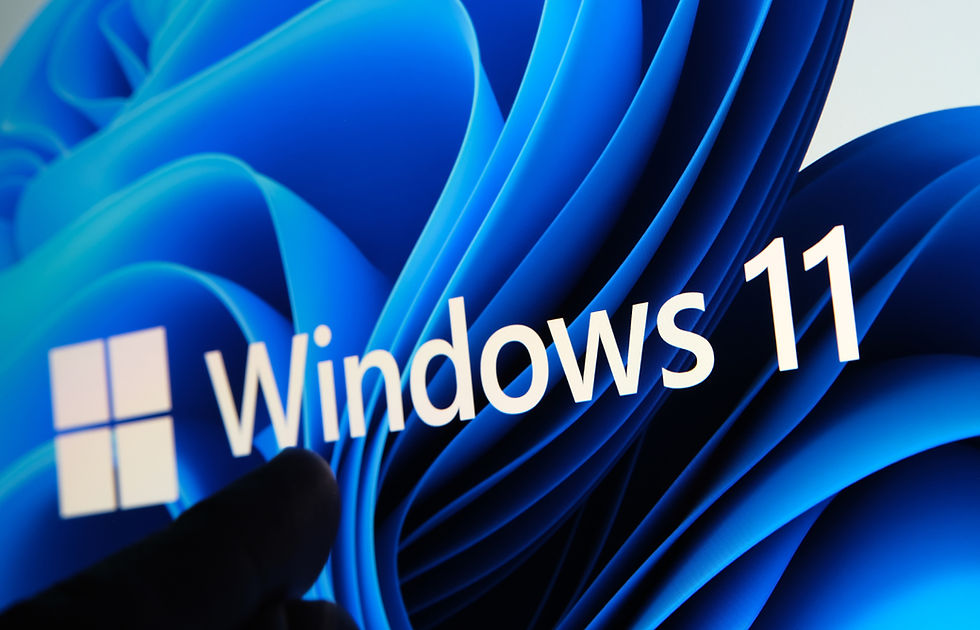Year‑End IT Budgeting: Where to Spend vs. Save in 2026
- hcantzler
- Nov 11
- 3 min read
Updated: Nov 20

Smart investments. Strategic cuts. A practical guide for SMBs closing out the year.
Why It Matters Now
The last quarter of the year is make-or-break time for IT planning. For many small and mid-sized businesses (SMBs), Q4 is when budgets are finalized, unspent funds need to be used or returned, and strategic priorities for the next fiscal year are set.
The stakes are higher than ever in 2026. With rising cyber threats, rapid shifts in remote work, and mounting vendor costs (Microsoft and AWS both announced pricing increases in 2025), SMBs are under pressure to do more—with less.
But cutting the wrong corners can leave your business vulnerable. Overinvesting in the wrong areas can stall your momentum.
So, where should you spend? Where can you safely save? Here’s your no-fluff guide.
Spend: Security, Compliance, and Cyber Insurance Readiness
Why: Regulatory pressure is growing, insurers are tightening their requirements, and threat actors are evolving fast. In 2024, over 60% of SMBs experienced at least one cyberattack (Source: ConnectWise SMB Cybersecurity Survey). Underinvesting here doesn’t just risk data—it can threaten your insurance coverage or contract eligibility.
Where to put your dollars:
Multi-Factor Authentication (MFA): Mandatory for most cyber insurance policies. Prefer phishing-resistant methods like FIDO2/passkeys.
Endpoint Detection and Response (EDR): More effective than basic antivirus; most carriers now require it.
Email Security (e.g., Safe Links, DMARC/DKIM enforcement): Stops phishing before it hits inboxes.
Policy and Risk Reviews: Update your incident response, BYOD, and acceptable use policies annually.
Cyber insurance application support: Budget time and resources to meet insurer technical requirements.
TEC Tip: If you’re doing a year-end risk assessment, prioritize MFA enforcement, legacy authentication lockdowns, and employee phishing training. These are the first three boxes insurers and auditors will look for.
Save: On-Prem Infrastructure and Outdated Hardware
Why: Cloud services, SaaS adoption, and virtualization have made large capital investments in on-prem servers and aging desktop fleets less essential—and more expensive to maintain.
Where to reduce spend (or reallocate):
On-prem file servers: Consider migrating to SharePoint, OneDrive, or hybrid cloud models with modern sync/access controls.
Aging laptops and desktops: Instead of upgrading every device, identify strategic replacements for power users and shift others to cloud-first workflows (e.g., virtual desktops or browser-based apps).
Legacy backup appliances: Modern, cloud-based backup platforms can reduce hardware costs while improving recovery speed and geographic redundancy.
TEC Tip: Check for any physical hardware that costs more to power, patch, or support than to replace. If it’s not covered by a support contract—or is out of warranty—it’s a risk disguised as a sunk cost.
Spend: Cloud Optimization and Licensing Cleanup
Why: Microsoft 365, Azure, AWS, and Google Workspace costs add up quickly—especially when licenses are unused, misaligned, or set to auto-renew with old pricing tiers.
Where to act:
Right-size licenses: Remove inactive users, downgrade over-provisioned accounts, and consolidate SKUs.
Reevaluate bundles: Don’t overpay for packages with unused services. Consider Microsoft Business Premium vs. E3/E5 based on your actual needs.
Cloud storage sprawl: Archive or delete inactive files and apply automated retention policies.
Annual commit discounts: Lock in savings for 2026 if your usage is stable.
TEC Tip: Conduct a license audit before your renewal date. Many vendors allow adjustments in the final 30 days—use them or lose them.
Save (Strategically): Custom Apps and Shadow IT
Why: Many SMBs find themselves with overlapping tools, outdated custom apps, or department-specific software that’s no longer delivering ROI.
How to rein it in:
Consolidate platforms: If five tools can be replaced by one (e.g., Microsoft Teams), do it.
Review custom apps: Are they secure, supported, and scalable? If not, consider sunsetting or modernizing them.
Eliminate “shadow IT”: Create an approved software list and remove unused or risky apps.
TEC Tip: Avoid ripping out tools without replacement—but do challenge software that doesn’t integrate, requires constant workarounds, or duplicates existing features.
Final Q4 Checklist: Smart Year-End Budget Moves
✅ Run a cybersecurity risk assessment
✅ Audit cloud licenses and storage costs
✅ Sunset or consolidate unused apps
✅ Review insurance and compliance requirements
✅ Patch critical systems and finalize device replacements
✅ Prepare a prioritized 2026 IT roadmap with input from leadership
What 2026 IT Budgets Should Prioritize
Spend On | Save On |
MFA and EDR tools | On-prem servers |
Compliance audits | Aging devices |
Cloud license optimization | Redundant SaaS tools |
Staff cybersecurity training | Custom software with no support |
Backup & recovery modernization | One-size-fits-all hardware refreshes |
Let’s Make 2026 Smarter, Safer, and More Cost-Effective
Budgeting isn’t just about cutting—it’s about aligning your IT with your business goals, risk profile, and growth plans.
At TEC Services Consulting, Inc., we help SMBs build realistic, actionable IT roadmaps that keep their teams secure, compliant, and competitive—without overspending where it doesn’t count.
📩 Ready for a year-end IT budget review?
Contact TEC Services at info@tecsinc.com or call (630) 305-7486
🌐 tecsinc.com📍 280 Shuman Blvd. #230, Naperville, IL 60563





Comments